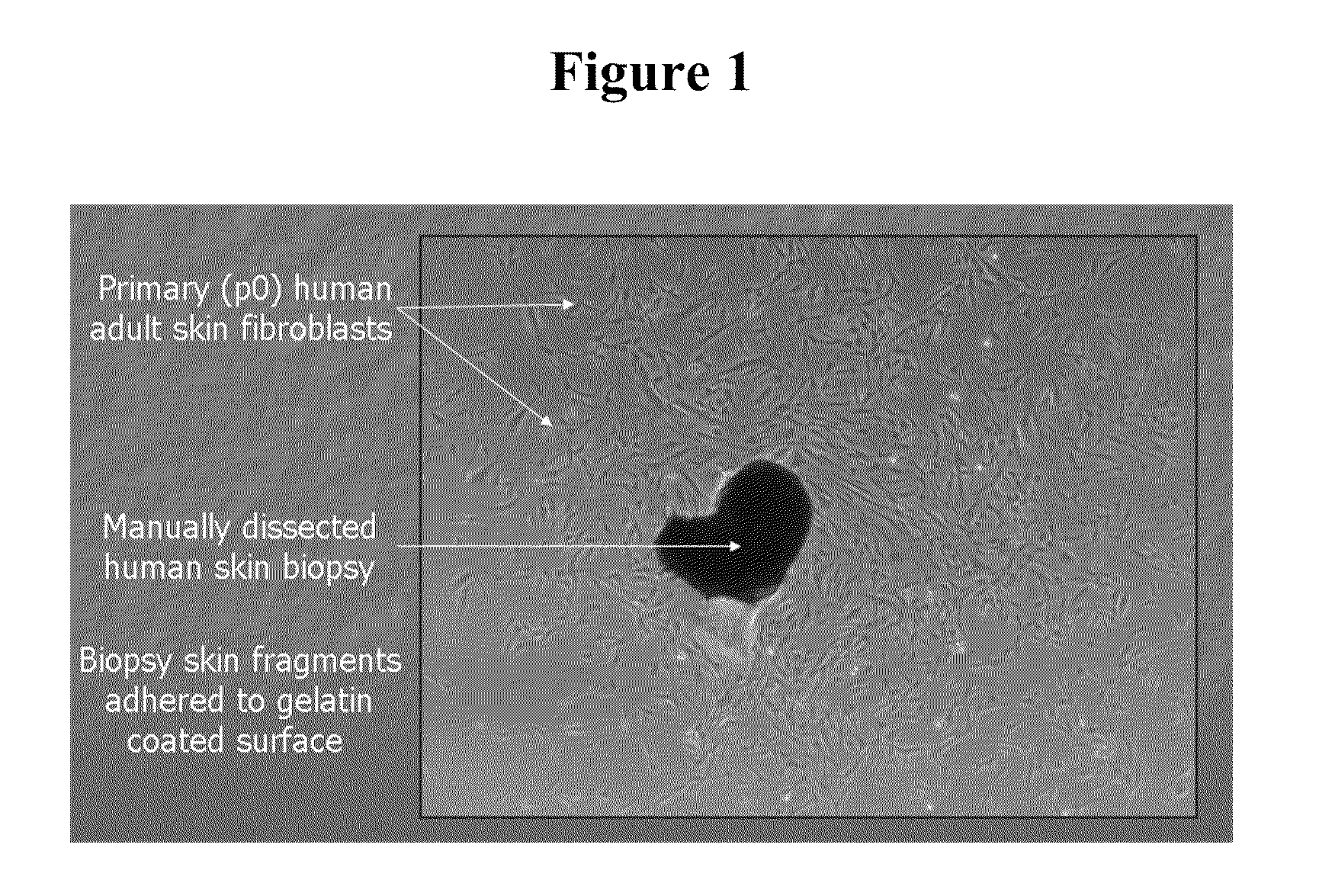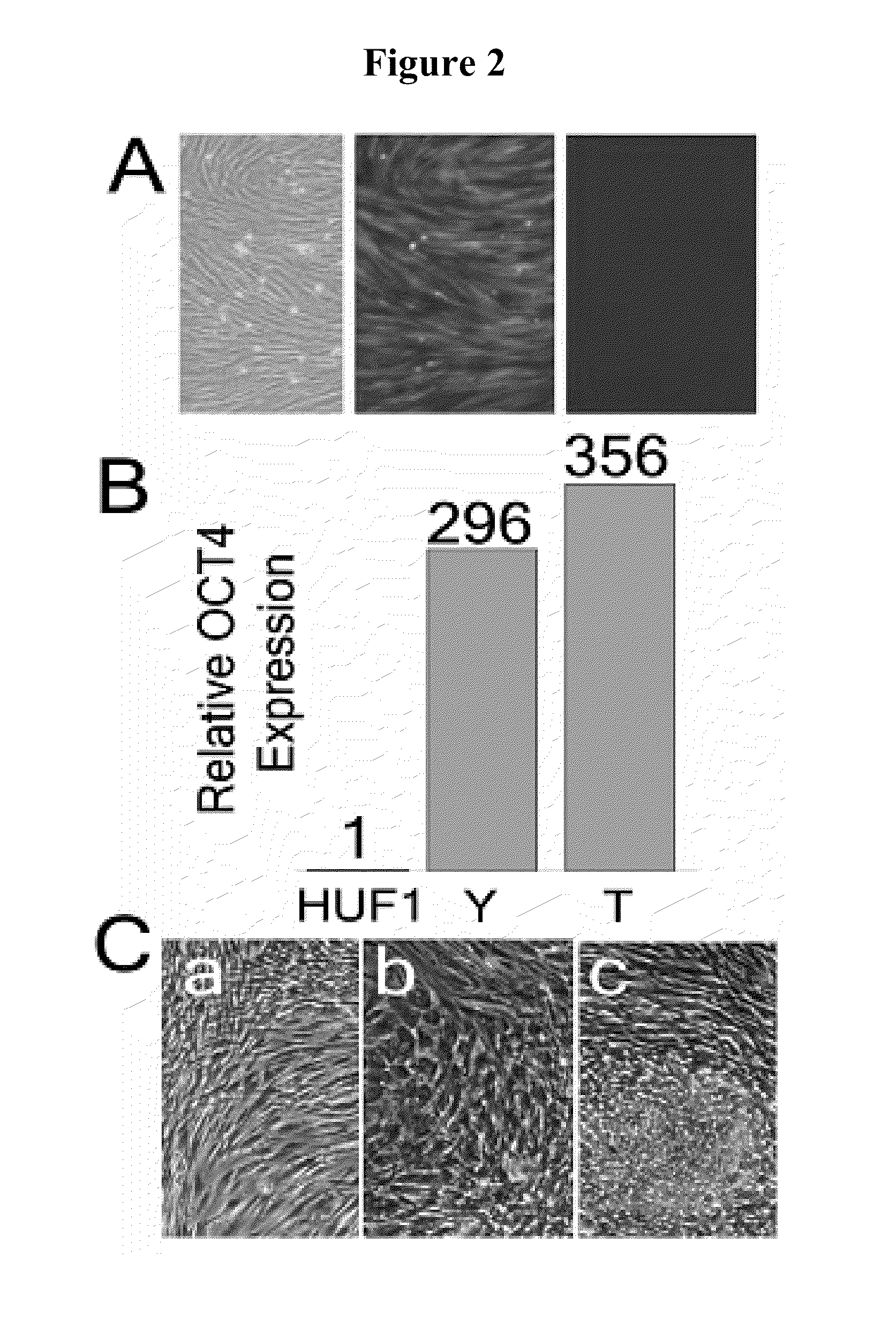Pluripotent cell lines and methods of use thereof
a cell line and cell technology, applied in the field ofpluripotent cell lines, can solve the problems of affecting the screening of disease-affected neural tissues, predicting, and limiting the use of postmortem samples,
- Summary
- Abstract
- Description
- Claims
- Application Information
AI Technical Summary
Benefits of technology
Problems solved by technology
Method used
Image
Examples
example 1
Experimental Procedures
[0151]The following experimental procedures are utilized in the subsequent examples.
[0152]Patient Selection: Potential patient with familial / genetic or sporadic / idiopathic forms of Parkinson's disease (typical or atypical) and healthy volunteers were informed of the study through poster advertising and referrals through patient advocacy and disease focus organizations (Parkinson's Institute). Potential donors were screened for men and women between the ages of 18 and 75 that had the familial or sporadic / idiopathic forms Parkinson's disease. The individuals in Table 2 were identified for participation in the study. Participants were informed about the nature and purpose of the study and its implications and appropriately consented. After informed consent was obtained, subjects underwent a skin punch biopsy. This tissue was utilized for the studies for creation of cell lines.
TABLE 2Patients identified for participation in studyCellDerivationLineDateSexAgePhenoty...
example 2
Derivation of Control Human Fibroblasts (HUF1 Line)
[0178]The HUF1 line was created from a healthy control volunteer. Similar to the techniques presented in Example 1, after informed consent was obtained, the patient's skin was cleaned with an alcohol swab, and a few milliliters of 1% lidocaine with epinephrine diluted 1:100,000 was injected into the skin to achieve local anesthesia. A 4 mm core punch biopsy instrument was used to remove a piece of skin and the specimen was placed on saline. Patient participation lasted approximately 1 hour. The skin defect was closed with 4-0 nylon suture and a double antibiotic ointment covered bandaid was applied to the wound. Sutures were removed in 2 weeks. A primary somatic fibroblast cell culture was established from the skin biopsy. The skin tissue biopsy was washed in Ca and Mg free Dulbecco PBS (Invitrogen, Carlsbad, Calif.) and minced into small pieces. Tissue pieces were seeded onto gelatin coated 6-well cell culture flasks (Corning, Acto...
example 3
Derivation, Characterization and Differentiation of Human iPSCs from a Parkinson's Disease Patient with a Triplication of the SNCA Gene
[0183]iPSC lines were generated from human fibroblasts of a patient (obtained by skin biopsy) with Parkinson's disease due to a SNCA triplication (HUF4 line) and his unaffected female sibling (HUF5 line), using a retroviral system with factors known to reprogram somatic cells, according to the methods of Example 1.
[0184]FIG. 8 illustrates SNCA triplication as confirmed in HUF4 iPSC clone 17 line, by qPCR. Quantitative real-time PCR (qRT-PCR) analysis for the SNCA gene was performed using 40 ng of genomic DNA and SYBR® Green PCR Master Mix. Reactions were performed in triplicate, wherein each target region was co-amplified with an internal control (GAPDH) using the ABI 7000 RT-PCR system (Applied Biosystems). Primers used were:
SNCA Exon 3 forward primer TGACAAATGTTGGAGGAGCASNCA Exon 3 reverse primer CTGGGCTACTGCTGTCACACGAPDH forward primer TGGGCTACACT...
PUM
| Property | Measurement | Unit |
|---|---|---|
| temperatures | aaaaa | aaaaa |
| concentrations | aaaaa | aaaaa |
| volumes | aaaaa | aaaaa |
Abstract
Description
Claims
Application Information
 Login to View More
Login to View More - R&D
- Intellectual Property
- Life Sciences
- Materials
- Tech Scout
- Unparalleled Data Quality
- Higher Quality Content
- 60% Fewer Hallucinations
Browse by: Latest US Patents, China's latest patents, Technical Efficacy Thesaurus, Application Domain, Technology Topic, Popular Technical Reports.
© 2025 PatSnap. All rights reserved.Legal|Privacy policy|Modern Slavery Act Transparency Statement|Sitemap|About US| Contact US: help@patsnap.com



